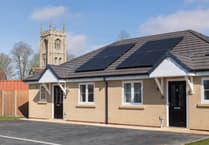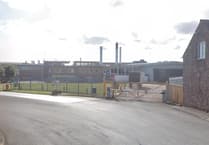ONE of my absolute garden favourites is in all its glory in the flowerbeds now. Nerines.
They are such under-appreciated, hard working plants (herbaceous perennial bulbs), delivering the most spectacular displays.
And they also make fantastic cut flowers, lasting indoors for ages.
I mix mine with some lavender spikes but they are equally as effective on their own and even just a single flower in a bud vase will brighten up a windowsill - I always try to keep a small vase of fresh flowers, or cut herbs, next to my computer to ease my screen-time.
It is well worth Googling ‘flower displays using Nerines’ as there are some lovely ideas.
Most commonly found in a vivid pink, they are varieties in white, burnt orange, various shades of pink and a gorgeous deep red.
Also known as the Guernsey Lily, you will probably find them in your garden centre now in pots in full flower.
They can be planted straight into borders, tubs or even displayed in the house whilst in flower and planted outside when the blooms die back. Alternatively, you can buy and plant the bulbs in early spring about 2” below the surface and 6 “ apart.
Nerines can be susceptible to slug damage as the flower-heads develop, but will be left alone by rabbits.
It’s been a week of bright sunshine and heavy showers, with the showers filling the birdbath with lovely soft rainwater and also providing puddles for the birds to bathe in – the best entertainment - and the ivy flowers have just been alive with bees in the autumn sunshine.
Ivy flowers provide a great source of late food, and therefore winter stores for the honeybees, as well as pollen and nectar for other bees and pollinators, so don’t be in too much of a hurry to cut it back.
It is worth noting that a lot of the bees you see on the ivy now may well be ivy bees - which look very much like honey bees but are actually solitary bees.
The ivy bee was first recorded in the UK in 2001, and is now common in much of Southern England and Wales.
As its name suggests, ivy is it’s main source of food and they will be busy visiting ivy flowers through October and November.
Ivy bees prefer to burrow and nest in lightly vegetated areas, such as paths, banks and lawns, as well as roadside verges and golf courses.
They favour south facing banks, so if you have a light soil in your garden, keeping the grass short will encourage this species to nest.
Females emerge from their burrows in early September.
Once they have successfully mated, the female will start to dig and create chambers where she lays her eggs.
Then she begins to collect and store ivy pollen as a food source for the larvae – this is when you will see them so busy on the ivy flowers.
Incredibly, the adults only live for around six to eight weeks, which they spend constantly collect pollen and store it in their burrows.
Then the adults die and the eggs will hatch into larvae, which feed on the pollen stores until they develop into adult ivy bees.
They emerge as adults in early September the following year, and the cycle starts again.





Comments
This article has no comments yet. Be the first to leave a comment.